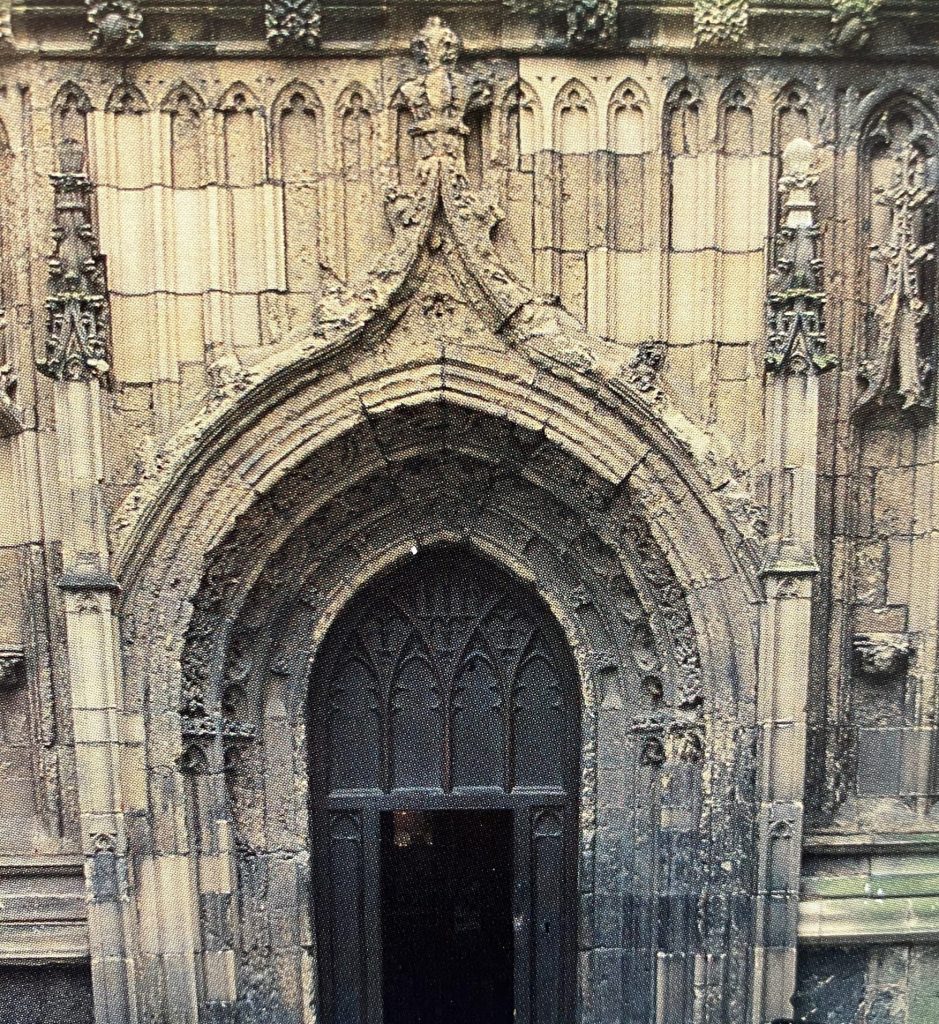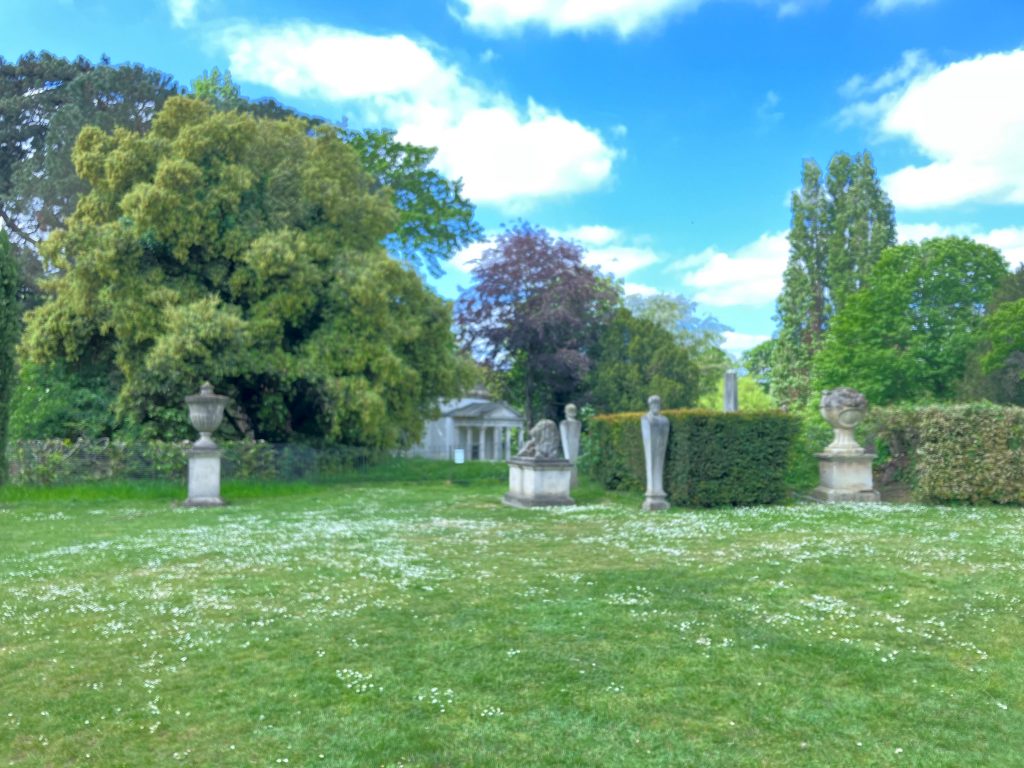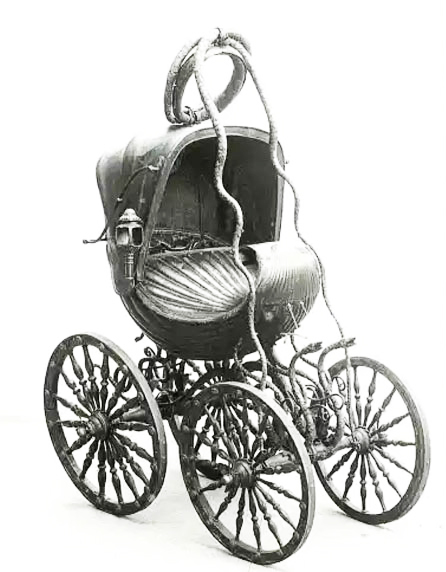An A to Z of the Chiswick House Archives: K is for Kent, William Kent.
In the latest in our A-Z series, volunteer archivist Cluny Wells explores the artistic eye of William Kent and the influence his life had on his proceeding creations that can be seen around Chiswick House and Gardens.

William Kent was the greatest designer of the eighteenth century, even though what he created in his early years was often third rate or disastrous.
So said his biographer, Timothy Mowl.
William Kent met the 3rd Earl of Burlington in Italy, both in 1715 and 1719 when the Earl was on his two Grand Tours. It was almost entirely through all the contacts Kent made in Italy that he acquired his influential patrons, including Lord Burlington, who went on to recommend him to their friends. The years spent in Italy proved to be of paramount importance to Kent’s future career.
William Kent was born in 1685, and his family name was actually Cant. He chose to change it to Kent as an adult. His father was a prosperous joiner, who single-handedly brought William and his sister Esther up. Their mother died when William was 12 and Esther was just 6. They lived at 45, The High Street in Bridlington, Yorkshire and William attended the Grammar School there. The school was situated in the Bale, the 1388 gatehouse of Bridlington Priory, and all the surrounding buildings were designed in the highly decorative Gothic style. A feature of this style was the Ogee Porches which he saw every day through his school windows. These porches became an influence on his early designs, including some for the theatre’s that were running around that time.

As a young man in London, William Kent met the architect John Talman, son of William Talman the Court architect around 1709 and during the reign of King William III. The brash, optimistic and cheerfully eccentric Talman junior took Kent under his wing and off to Rome that year. Kent was by now aged 24, and spent the next 10 years in an artistic apprenticeship, thanks to Talman. They both shared some characteristics, which were ebullience, an adventurous nature, an aptitude for drawing and painting and they were unmarried men. Kent was a charmer, witty, amenable and good company. It seems that Talman grew fond of him and helped his Italian career to grow.
Whilst in Italy, Kent met up again with Lord Burlington, on his second Grand Tour of 1719, and dropping Talman, returned home to England with Burlington, as his new mentor. But Talman’s design influence stayed with Kent – it was a part Rococo style that would prove at odds with the austerity of Palladianism, but would also have a lasting impact on some of his future designs.
Due to the close friendship which developed between Kent and Burlington, and after their return to England, Kent was offered Burlington’s hospitality and was able to live in Burlington House for the rest of his life. As youngsters growing up, Burlington and Kent had been living within 20 miles of each other in Yorkshire. They probably would have had similar accents and dialect, or at least been familiar with both, and this could have explained, in part, their bond when they met in Italy.
Whilst William Kent and Lord Burlington were complete opposites, they worked well together. Kent was easy going, charming, indolent and idiosyncratic, whereas Burlington was austere, formal, learned and a rigid theorist. They not only worked together on the garden and Villa designs at Chiswick, but also at other estates such as Holkham Hall. At Chiswick it was Kent who encouraged Lord Burlington to de-formalise the grounds and lake to make them appear to be a natural landscape. As a result, Chiswick is considered to be the birthplace of the English Landscape Garden movement of the 18th century.
Kent had a painterly eye for the view or vista, and believed that “all gardening is landscape painting”. He designed ‘glimpses’ of the relevant view, such as the Ionic Temple through the shrubbery of the North Lawn – as one might see on the theatre stage.

Burlington commissioned Kent to edit and publish the Designs of Inigo Jones which he had acquired, when in Italy. Kent was particularly inspired by Jones’ drawings of designs for the masques which Jones had presented at Court for the Royal Family, 100 years previously. Jones had designed the costumes and scenery for these theatrical productions, working with the playwright Ben Jonson. Kent also worked on scenic designs for theatrical presentations, or masquerades, as they were by then known.
After the Villa had been built, in the 1730s, Kent drew several designs for the Cascade. He favoured a rustic design which would appear realistic, whereas Burlington preferred a more classical style. Kent’s rustic style was finally agreed by Lord Burlington.

Kent often drew whimsical sketches of designs of the grounds at Chiswick – some of which were constructed, but not all. These were usually of a garden feature, or scene which could include a people with an animal or two, such as dogs or rabbits, and were humorous or slightly cheeky.
A biographer of his stated that “Someone who could throw off those cheerful, seductive sketches must have made the sun shine every morning.”
Lord Burlington’s influence, may have enabled Kent to receive the commission to paint the new rooms and King’s staircase of Kensington Palace for King George 1 in 1726, as that commission was expected to have gone to James Thornhill, Sargeant Painter to the King at the time.
Burlington wished Kent to design a baby carriage for his oldest daughter, which he did in 1733. His design, a forerunner of the modern pram or buggy, was a highly decorative chassis on wheels, shaped like a shell and decorated with a snake motif. It also had springs. Because of its size and weight the pram had to be pulled by a goat or small pony, rather than by a person. This early example of a baby carriage would have been a luxury item, owned by royalty and the aristocracy. Unfortunately there do not seem to be any images of the Burlington children being transported around in this carriage – or even a sketch by Kent, its designer.

It is believed that Kent wrote the poem about the Inigo Jones Gate being re-erected in Chiswick in 1738:
Ho! Gate, how came ye here
I came from Chelsea last here,
Inigo Jones there put me together,
There was I dropping by wind and weather
Sir Hannes Sloane let me alone;
But Burlington brought me hither.
He was certainly present at Chiswick to inform Lord Burlington of the gate’s arrival, and to oversee its reconstruction.
The last major House and garden Kent worked on was General Dormer’s Rousham from 1737 to 1741. He transformed the house into something like an Early Tudor palace in a Gothic style, which included external statue niches with Ogee Arches over them, just like the ones he had seen all those years ago in Bridlington. He styled the garden at Rousham in the English Landscape style, and it remains today almost as it was when he finished it. Horace Walpole described it as the “most engaging of Kent’s works.”
Looking at Kent’s style of garden design, he seemed to use sometimes the Classical as at Chiswick, and other times the Gothic as at the Hermitage in Richmond. Mostly he seems to have employed a balanced mixture of styles a “happy conjunction of antique, Italian and gothic styles” (Dixon Hunt) certainly in the gardens of Badminton, Esher, Euston, Rousham and Stowe.
Towards the end of Kent’s life he worked on illustrating Spenser’s poem The Faerie Queene. It was published posthumously.

After William Kent’s death in 1748, aged 63, Lord Burlington arranged to have him buried in the Burlington family vault under St Nicholas’ Church, the Parish Church of Chiswick. This act shows he died loved and cared for by a friend of long standing – Burlington, even though they had been estranged for the few years preceding his death. In his will Kent left money to his sister Esther Pearson and his mistress Elizabeth Butler.
William Kent also worked on:
- Holkham Hall, in conjunction with Thomas Coke, Coke’s architect Brettingham and Lord Burlington
Sources:
William Kent. John Dixon Hunt. 1987
William Kent. Timothy Mowl. 2006
Chiswick House Gardens. David Jacques. 2022
Chiswick House and Gardens. Gillian Clegg 2011
Country Life, article parts 1 and 2, Christopher Hussey. 4th and 14th June 1946